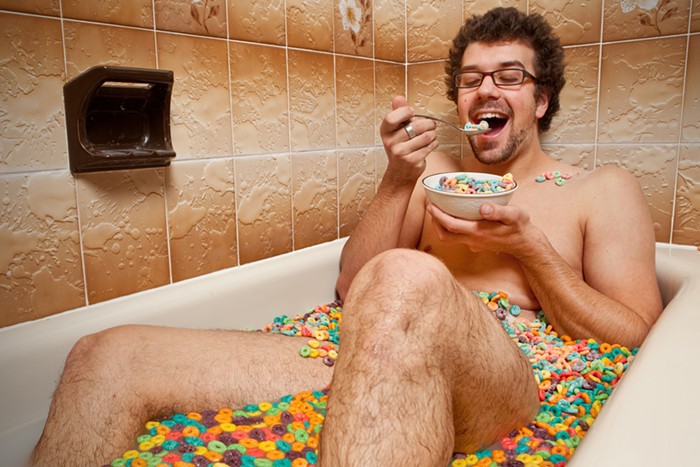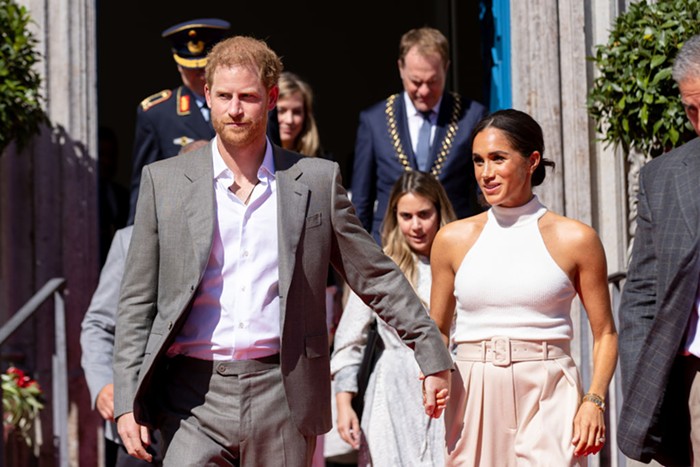Cézanne once observed that everything in nature could be broken down to three fundamental geometric forms: spheres, cones, and cubes. That idea, of course, was the inspiration for Picasso and Braque's exploration of Cubism. But Cézanne's vision also catalyzed a century of artists who have attempted to distill artistic representation to its most essential components. Circle Triangle Square, the current exhibition at Clark College's Archer Gallery, illustrates how, in many ways, the trajectory of art continues to be influenced by Cézanne.
While the pieces in the show are, predictably, dominated by the shapes identified in its title, they are rendered in diverse media: Painting, collage, sculpture, and photography are all represented. The exhibition is dominated by working artists based in Seattle and Portland, but there are also a few minor works from major artists, including unremarkable pieces by Frank Stella and Robert Mangold. These inclusions help trace a formal lineage to the more current local work, but are among the weakest pieces in the show. The exceptions are two screenprinted diptychs by Josef Albers from 1972. One, "Formulation/Articulation, Folio II, Folder 25," is a deceptively facile work. Albers' composition relies on a series of simple shapes, executed in clean lines and solid colors. But his arrangement takes advantage of how the human eye reads these elements to perceive depth. As such, it appears alternately flat and dimensional.
Of the regional work on display, there's a striking disparity among the artists' interpretations of these forms. To illustrate, paintings by Mary Henry and G. Lewis Clevenger face one another at one end of the gallery. Henry's "Metaphor" is made up of rigidly delineated rectangles, conjuring the work of Piet Mondrian. The lines are as tautly controlled as her color palette, which is limited to black, white, orange, and yellow. Mirroring the coldness of all the right angles, Henry's hand seems to be entirely absent. There are no brushstrokes visible in the even application of paint, as if the canvas was actually produced by a machine. The foundation of Clevenger's "Urban Scene" is similarly grid-like in composition, but there's a palpable chaos to his working style that is totally absent in Henry's work. Working with a palette knife, Clevenger attacks his canvas, scraping and smearing layers of paint. For Clevenger, it seems that the order of geometric forms is something to be tested, even undermined. Henry, however, seems to revel in the sterility, as if there's comfort in such calculated organization.
This tension between order and disorder is one of the show's pervasive motifs. In Victoria Haven's ink drawing, "The Lucky Ones—Limelight," she creates an intricate lattice of dotted lines, which form triangles, squares, and rhombuses as they intersect. But, ultimately, there's no discernible order to the pattern. As the dotted lines call to mind stitches, the piece begins to resemble a haphazardly sewn quilt. Likewise, Jamie Walker's stoneware sculpture "Cloud #9" is composed of two bubbling forms that snake along the wall. Each is made up of interlocking spheres of varying dimensions, which sprout even smaller counterparts. The title implies that the forms are clouds, but the representation hardly seems natural. Not only are Walker's clouds black, but also they make one think of molecular models—itself an abstract representation of how we interpret nature.
The most dazzling work in Circle Triangle Square belongs to photographer Chris Engman. In "The Haul," two moving trucks are parked in front of brick buildings. The beds of the trucks, however, are only white cages, which outline the storage cab a viewer expects to find there. As a result, they function as frames, calling a viewer's attention to the pattern of the brickwork that can be seen through them. It's a move that allows the entire photograph to be read as a series of intersecting lines, from the buildings' partitioned windowpanes to the telephone and power lines. Engman repeats this idea in "Three Squares," a gorgeous image of an unspeakably green Pacific Northwest forest. Like "The Haul," this image creates multiple pictures within the picture, as three rope squares, suspended by cables, frame segments of the larger image. On the one hand, the squares are an impressive visual feat: Although equal in size, each is placed at a different distance from the camera. But, more importantly, the internal framing prods the viewer to look more closely at the image, to zero in on the details. And, like Cézanne observed, the twisted contours of stumps and the play of lines in branches all begin to look like shapes.












